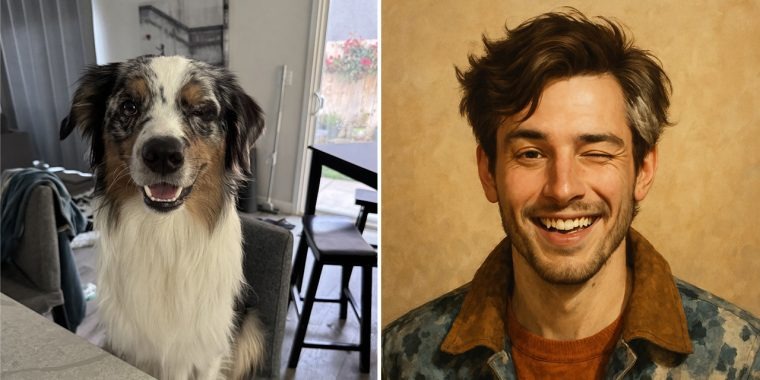Imagine your friendly Labrador transformed into a bespectacled librarian or a rebellious tabby cat strutting around in Doc Martens. It may sound absurd, but this new trend is taking social media by storm. Using GPT-4o's image generation tool, ChatGPT users are bringing their furry companions to life as human-like characters. This growing trend combines creativity, stunning portraits, and a touch of poetic charm that has people everywhere buzzing.
The process is simple: upload a photo of your pet to ChatGPT and ask, "What would my animal look like as a person?" The AI then analyzes the image and creates a detailed description of the human version of your pet, including their look, personality, and attitude. Thanks to the new image generation feature, the model can even produce a lifelike portrait of the transformed animal.
Accounts like @chatgptricks on Instagram have been sharing prompts to elevate the experience further, encouraging users to ask ChatGPT to remove animal features (like fur or ears) while keeping the emotional and visual essence of the creature intact. The result? Characters so convincing that they could have been lifted straight out of a graphic novel or an auteur film.

Why has this trend exploded in popularity? It checks all the boxes: it's fun, endearing, and surprising. But more importantly, it taps into our well-known fascination with anthropomorphism—the tendency to attribute human traits to animals. With ChatGPT, this whimsical concept is brought to life in an instant.
Suddenly, a shy rabbit becomes a melancholic poet, an excitable golden retriever takes on the persona of a matcha-obsessed influencer, and your cat who spends her days judging the world from the window? She could very well be the editor-in-chief of a highbrow cultural magazine.
While the trend is undeniably fun, it’s not without controversy. Some users have taken the concept even further by creating images in the iconic style of Studio Ghibli, igniting a fresh wave of criticism. The legendary animation master Hayao Miyazaki had previously expressed his deep disapproval of AI-generated art, calling it a "true insult to life" back in 2016. His stance echoes the growing concerns within the artistic community about the automation of creative work.
However, when it comes to our four-legged companions, the intent behind the trend remains lighthearted. A mix of virtual fan art and mini animal storytelling, it’s driven more by affection and a desire to have fun than by any serious artistic critique.
At its core, this experience might reveal just as much about ourselves as it does about our animals. The human versions we create for them often reflect our own imaginations, emotions, and even identities. What started as a playful activity has evolved into a new way to deepen our connection with those who share our daily lives.

